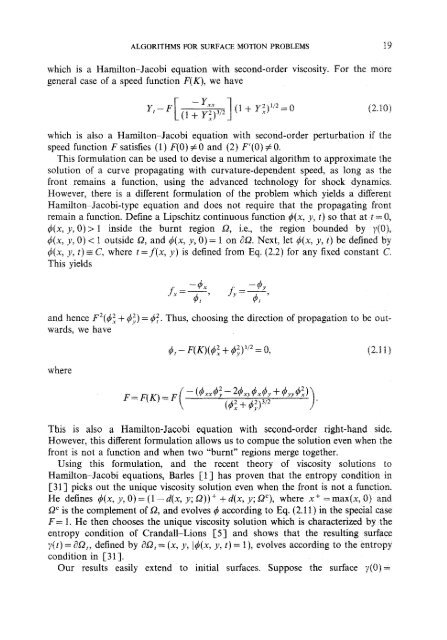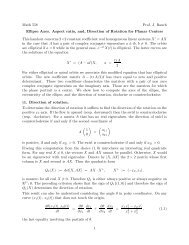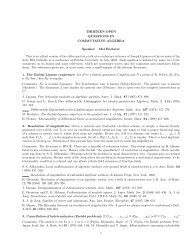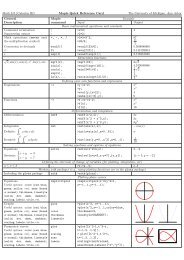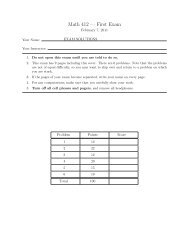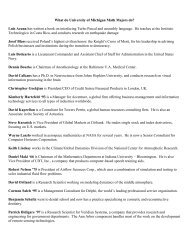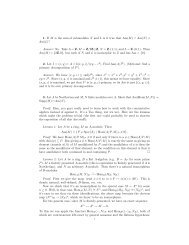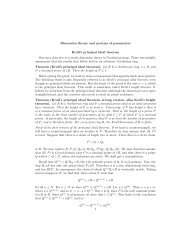Fronts Propagating with Curvature- Dependent Speed: Algorithms ...
Fronts Propagating with Curvature- Dependent Speed: Algorithms ...
Fronts Propagating with Curvature- Dependent Speed: Algorithms ...
You also want an ePaper? Increase the reach of your titles
YUMPU automatically turns print PDFs into web optimized ePapers that Google loves.
ALGORITHMS FOR SURFACE MOTION PROBLEMS 1<br />
which is a Hamilton-Jacobi equation <strong>with</strong> second-order viscosity. For the ore<br />
general case of a speed function F(K), we have<br />
(2.10)<br />
which is also a Hamilton-Jacobi equation <strong>with</strong> second-order perturbation if the<br />
speed function P satisfies (1) F(0) # 0 and (2) F’(O) # 0.<br />
This formulation can be used to devise a numerical algorithm to approximate the<br />
solution of a curve propagating <strong>with</strong> curvature-dependent speed, as long as the<br />
remains a function, using the advanced technology for shock<br />
ever, there is a different formulation of the problem which yields<br />
Hamilton-Jacobi-type equation and does not require that the propagating from<br />
remain a function. Define a Lipschitz continuous function 6(x, y, t) so that at t= 0,<br />
4(x, y, 0) > 1 inside the burnt region Q, i.e., the region bounded by l’(O),<br />
4(x, y, 0) < 1 outside Q, and 4(.x, y, 0) = 1 on &A Next, let 4(x, y, t) be defined by<br />
4(x, Y, t) = C, w h ere t =f(x, y) is defined from Eq. (2.2) for any fixed constant C.<br />
This yields<br />
and hence F*(Cz + 4;) = I$:. Thus, choosing the direction of propagation to be out-<br />
wards, we have<br />
where<br />
4 I - F(K)(qv + p)l’* = 0,<br />
* Y<br />
This is also a Hamilton-Jacobi equation <strong>with</strong> second-order right-hand s<br />
However, this different formulation allows us to compue the solution even when<br />
front is not a function and when two “burnt” regions merge together.<br />
Using this formulation, and the recent theory of viscosity solutions to<br />
amilton-Jacobi equations, Barles [l ] has proven that the entropy condition in<br />
[3 1 ] picks out the unique viscosity solution even when the front is not a fn~~tion.<br />
He defines 4(x, y, 0) = (I- d(x, y; a))+ + d(x, y; O”), where x’ = max(x, 0) an<br />
DC is the complement of 9, and evolves 4 according to Eq. (2.11) in the special case<br />
P= 1. He then chooses the unique viscosity solution which is characterized by the<br />
entropy condition of Crandall-Lions [5] and shows that the resulting surface<br />
y(t) = K?,, defined by 892, = (x, y, 14(x, y, t) = I), evolves according to the entropy<br />
condition in [31].<br />
Our results easily extend to initial surfaces. Suppose the surface v(<br />
(2.11)


